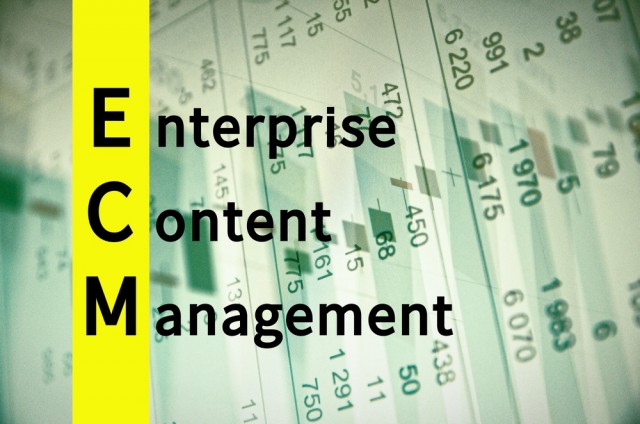What you need to know about enterprise content management

Thanks to the likes of smartphones, the internet and big data, we now have access to more information in various shapes and sizes than ever before.
In most cases, having more information is a good thing for businesses, but there comes a point where there is simply too much to keep track of. This is especially true in large enterprises, where invoices, word documents, receipts and purchase orders are in abundance and could be needed by anyone at any time.
Keeping on top of all of this would be a challenge for even the most organized individuals, so that’s where enterprise content management (ECM) comes in. It has its origins in the document management systems of the 1990s. ECM refers to the strategies, methods and tools used to capture, manage, store, preserve and deliver content and documents related to organizational processes. Usage can then be analyzed, enabling enterprises to deliver the relevant content to users when and where they need it.
Content is generally defined as either structured, unstructured or semi-structured information. Structured refers to that which is highly defined and can be readily processed by a computer program, unstructured information is that which does not have a full-defined structure and is likely to be used by humans (e.g. a word document) and semi-structured information lies somewhere in between, containing data that can be computer-processed, but that also required some kind of identification and classification by humans (e.g invoices, purchase orders).
Benefits to Businesses
According to Gartner: "The ECM market is going through a shift, from large enterprise suites to more business solutions focused on delivering business value in specific use cases", so there are many benefits ECM can offer to organizations of all sizes, the most obvious being that it can save administrators and business leaders a huge amount of time and effort.
One big benefit of ECM is that it can help businesses reduce their operating costs as the traditional costs associated with printing, shipping and storing paper are eliminated. Productivity is also improved as employees have instant access to content whenever and wherever they need it through a mobile device. In addition ECM speeds up business activity by automating certain decisions and processes.
Other benefits include improved data storage and backup, along with ensured continuity and conformity to industry and government regulatory standards.
Standards, including HIPAA, SAS 70, BS 7799 and ISO/IEC 27001, have a major influence on the development and deployment of ECM. Ensuring compliance with standards makes outsourcing ECM to a certified service provider an attractive alternative to an internal ECM deployment for many businesses.
Market Options
Big players have been quick to see the benefits of ECM. Microsoft entered the market with SharePoint in 2006 as did Oracle with its own content management product.
As you might expect, IBM is the leader in the ECM market, with a range of products and solutions on offer that "use analytics to provide access to content for the right people at the right time to help make better decisions."
Other major players include the likes of Lexmark (which has been named a "Leader" for ECM by Gartner for the third year in a row), OnBase by Hyland (named a leader for the sixth year in a row) and OpenText (named as a leader this year).
Published under license from ITProPortal.com, a Future plc Publication. All rights reserved.
Photo Credit: g0d4ather/Shutterstock